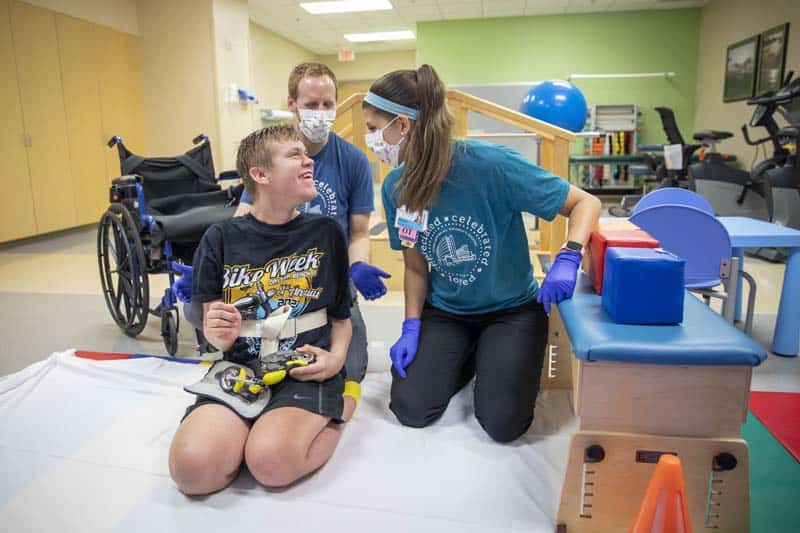New Technology at Johns Hopkins All Children’s Hospital Helping Kids Battle Epilepsy
Ethan, 19, has battled severe seizures since he was an infant.
“Everything was normal when he was born, but then he started having infantile spasms, seizures, at 3 months old, which led to a diagnosis of Lennox-Gastaut syndrome around 2 years old,” says Ethan’s mom, Kelli.
Lennox-Gastaut is a severe form of epilepsy which has affected Ethan’s development and communication.
“Everything revolves around Ethan’s care,” says Kelli. “Lennox-Gastaut has a degenerative effect on him, and the seizures cause his nonverbal communication. It has a deteriorating effect. He makes noises and points to what he wants.”
Ethan has been a patient at Johns Hopkins All Children’s Hospital for more than 15 years under the care of the Institute for Brain Protection Sciences team, including Matthew D. Smyth, M.D. FACS FAAP FAANS, chief of the pediatric neurosurgery division.
“Epilepsy is a disease with sudden electrical discharges, called seizures, that affect brain function,” says Smyth. “There are small seizures where a child maintains consciousness, and only part of the brain is involved, or you can have more severe generalized seizures where the whole brain is involved.”
About one percent of the entire population of the United States has epilepsy.
“It’s a very complicated disorder and there are lots of different causes. In many cases, like Ethan’s, we don't have an identified cause,” says Smyth. “In some cases, there's a genetic syndrome that a patient inherits. Other times, you can develop epilepsy after a brain injury, scarring of the brain and can develop seizures—or you can have a tumor that causes the seizures.”
Ethan has taken a variety of medications, including four anticonvulsants. Unfortunately, his seizures remained, but a surgery called corpus callosotomy has been on the table and in discussion as an option to treat Ethan’s seizures for the last decade. His parents elected this surgery this year since it can now be performed as a less invasive surgery through ablation (zapping tissue with the heat of a laser) versus the traditional way of an open surgery with an incision at the top of the head.
“Then we would know we’ve done everything we could, even if he doesn’t improve,” says Kelli.
It wouldn’t be a cure for the seizures, but the hope would be to see improvements.
“The goal is to make his life better, hopefully reduce the amount of seizure medicine he has to take and minimize the chance that he has this loss of tone where he may fall and injure himself,” says Smyth. “He also didn't have the big open incision, swelling on the scalp or any pain after the procedure.”
Kelli reports that a few weeks post-operation, his seizures have become less frequent.
“He’s a more social kid and now opens the door to his room and walks out. There's definitely a bigger desire to walk and more interest in exploring and being outside,” she says.
During Epilepsy Awareness Month this November, Smyth also encourages families who have a child with seizures to consider all options, as technology for less invasive surgeries have improved and could significantly improve a patient’s life, especially if seizure medications have failed.
For more information, visit HopkinsAllChildrens.org/Brain.
*Presented by Johns Hopkins All Children's Hospital | Originally published in November 2022 of Tampa Bay Parenting Magazine.


